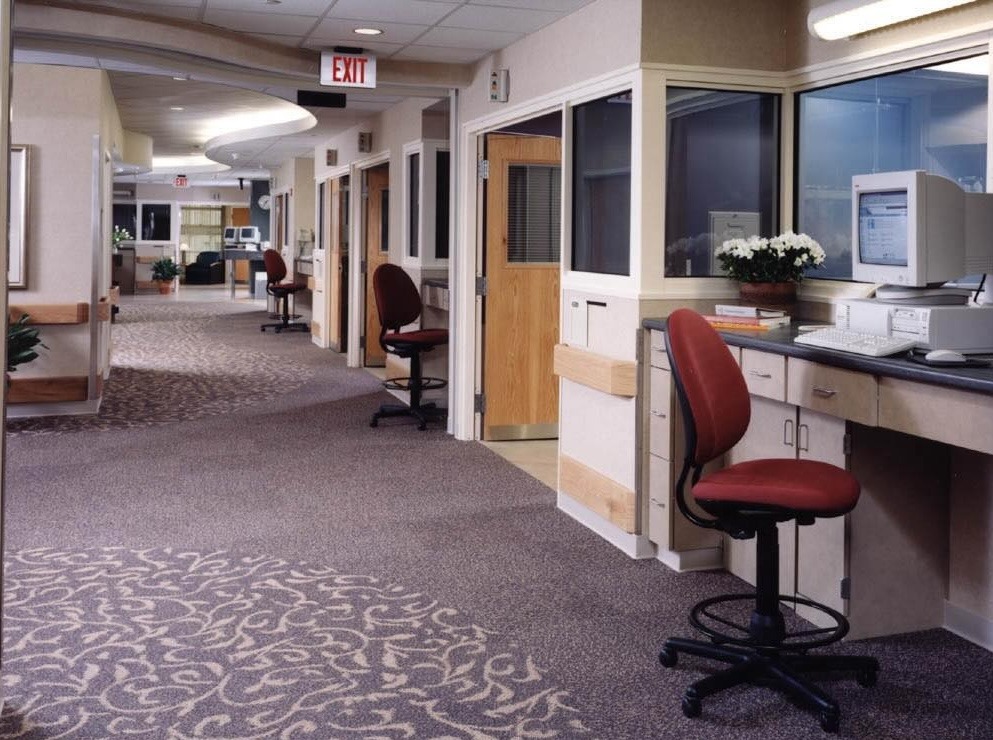From demographics to technology to politics, there are many things happening in our world that are influencing U.S. healthcare facility design.
What's new? What's old? And what's next?
To tackle this in our trends discussion at last week's Healthcare Design Expo and Conference, Sarah Bader of Gensler and I looked at recent industry surveys and reports.
We decided to focus on four trends: urbanity, political environment in the U.S., patient experience movement, and demographics.
Last week, I wrote about our discussion of the political environment in a post titled "What Do 'Hamilton' and the Affordable Care Act Have in Common?" Here's some highlights from the other three:
1. Urbanity
Our Point of View: One of the metatrends shaping the world of 2025 in Gensler’s 2016 Design Forecast is “Urbanity, Not Just Urbanization.” By 2050, there will be 6.3 billion city dwellers worldwide, up 62% from today.
Cities will have huge influence on our ability to resolve pressing issues like urbanization and climate change. A big design challenge is to maintain human scale that community requires. A predicted shortage of doctors may make digital access to care a necessity.
Healthcare facilities will be more integrated into the community – whether in retail spaces, stand-alone clinics, or senior living communities. Large medical complexes in cities may still exist, but some of their spaces will be repurposed as treatment modalities and places where people access care change.
Discussion: People generally agreed with this scenario, pointing out the growth of urgent care clinics -- although their use may vary from state to state.
One gentleman from a health system shared that his group had done a tour of urgent care clinics in Houston while at the conference, but had observed that while there seemed to be a lot of them, most didn't have any patients. "They don't accept Medicare," he said.
For routine care and medical questions, many see "face-timing" doctors as a good option, which could affect how and where care is delivered.
2. The Patient Experience Movement
Our Point of View: Improving the patient experience is still high on the agenda of many U.S. healthcare providers – mostly because government reimbursements are tied to HCAHPS scores. And you can now go to healthcare.gov and see how your hospital rates against others.
According to the Consumer Health Insights survey mentioned in AHA’s Environmental Scan, consumers want the same qualities in health care companies that they value in non-health care settings. More than half of the survey’s participants cited great customer service as important for non-health care and health care companies alike.
Because of this, healthcare leaders are beginning to understand that the design of the physical environment can have an impact on patient satisfaction/patient experience. 86% in HFM/ASHE’s survey said patient satisfaction is “very important” in driving design changes. 54% in HCD’s survey responded that improved patient satisfaction/HCAHPS scores was a common client goal.
Discussion: Several hospital-based designers shared that they are being held accountable for the patient experience. This new "skin in the game" approach ties bonuses and raises to outcomes measured by HCAHPS scores, such as noise and cleanliness.
Others pointed out that staff satisfaction is also key to patient satisfaction. Designing environments that ease stress and support staff must be part of the strategy.
Another designer commented that patients' perceptions of a nice hospital environment might vary according to socio-economic status. "What if patients come from very poor neighborhoods?" she asked, adding that any type of hospital environment is way better than where they live. But to more affluent patients, the same hospital might seem like a dump.
3. Demographics
Our Point of View: According to research done by CADRE, for the first time in recent history, the U.S. healthcare marketplace is catering to four different generations — Silent Generation, Baby Boomers, GenX, and Millennials.
Each generation has unique emotional triggers and motivations. Boomers rely more on physician recommendations than Gen-Xers or Millennials, who rely on prior experiences. Gen-Xers and Millennials are skeptics and need more information.
Across all generations, there is a need for instant gratification. Millennials also have very little brand loyalty. Patients are living longer, but are not necessarily healthier.
AHA reported that the Health Research Institute also found that Millennials, who are enthusiastically embracing wearables and health apps, prefer virtual communication for health interactions.
Embracing Our iHumanity is also one of the design trends identified by Gensler.
We’ve all been focusing on the Boomers, but it may just be the Millennials who will have the most influence on healthcare facility design in the next 15-20 years.
Discussion: We ran out of time to talk about this very much, but one gentleman stated that we also have to look at the workplace we're creating for healthcare staff. "Millennials grew up doing homework while watching TV and texting their friends," he reminded the group. "They work differently."
Another designer said that while nobody likes to wait to see their doctor, Boomers are more tolerant of waiting and may experience it differently than Millennials. "But everybody wants a good experience," she observed.
Want More Food for Thought?
Download Healthcare Trends for 2016, our summary of the recent industry surveys and reports.
P.S. Please do me a favor -- if you liked this post and like this blog, please share it with others by sending them the link and/or post it on your Twitter, LinkedIn, or Facebook, etc. Also, don't forget to subscribe, so you'll get emails when new content is posted. Thanks!







